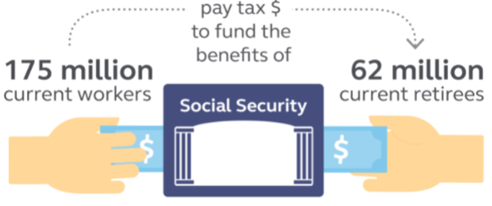Social Security’s Biggest Boost In Decades
Every October, the Social Security Administration announces a cost-of-living adjustment (COLA) that directly impacts retirees’ payments for the coming year. The Social Security Administration (SSA) announced earlier this month that Social Security benefits will increase by 5.9% in 2022, the largest annual increase in 40 years.
The cost-of-living adjustment will affect about 70 million people overall, including 64 million retirees and 8 million Supplemental Security Income recipients. The COLA will boost the average individual retirement payment to $1,657 per month next year, an increase of $92, and to $2,753 per month on average for couples, an increase of $154.
“This would be the highest COLA that most beneficiaries living today have ever seen,” Mary Johnson, Social Security and Medicare policy analyst for The Senior Citizens League noted.
With the annual increase in benefits averaging just 1.65% over the last decade, the latest adjustment is much larger than in recent years. The administration also announced the maximum amount of earnings subject to the Social Security tax will rise by 2.9% next year, increasing to $147,000 from $142,800.
Inflation surges: While seniors will welcome the boost, the increase in benefits is driven by inflationary pressures which have been larger and lasted longer than many economists predicted in the wake of the coronavirus pandemic.
The Labor Department reported earlier this month that the Consumer Price Index rose by 0.4% on a monthly basis in September, and 5.4% on an annual basis. This means much if not all of the Social Security adjustment will be claimed by higher prices for all kinds of goods, from gasoline to groceries, etc.
The annual increase in Social Security benefits is not intended to provide an increase in real purchasing power. Rather, it is designed to maintain purchasing power at a steady level. But many consumer advocates say the government program has failed to do that over the years, in part because of inaccurate inflation measures.
“This is welcome but inadequate — healthcare and prescription drug costs have been going up way faster than seniors’ cost of living,” Nancy Altman, co-director of the advocacy group Social Security Works, told The Washington Post. “People’s Social Security benefits have been eroding for decades, and will continue to erode even with this increase.”
Raising the long-term cost: Higher benefit payments will put additional pressure on the Social Security trust funds. The Old-Age and Survivors Insurance Trust Fund, which provides benefits for retirees, is currently projected to deplete its reserves in 2034, at which point recipients will see a 22% cut in benefits — assuming Congress doesn’t act before then.
Anqi Chen of Boston College’s Center for Retirement Research told The Wall Street Journal the latest upward adjustment could move the depletion date forward by about three months, though much depends on how wages keep up with inflation.
“If wages are not increasing at the same rate as inflation in a given year, then what’s going in is going to be increasing less than what’s going out in benefits,” Chen said. “That’s when you get the mismatch.”
The COLA for Social Security benefits is based on the Consumer Price Index for Urban Wage Earners and Clerical Workers (CPI-W). To determine this adjustment, the SSA compares changes to the average CPI-W index between July, August and September of the previous year (in this case 2020) to those same three months of the current year (2021). The percentage change between the two years determines the COLA for the following year.
Everyone buying and selling products and services in the US knows the prices for consumer goods have increased significantly over the past year. Supply chains crippled by the impact of COVID-19, coupled with damaging weather conditions, have made some goods scarce as prices continue to rise.
Other Social Security Changes For 2022. For those still working, the SSA’s announcement offers some good-to-know updates on 2022 SS tax changes as well. The combined SS and Medicare tax rate will remain the same in 2022: 7.65% for employees and 15.3% for self-employed filers.
As noted above, the maximum taxable earnings are increasing slightly from $142,800 to $147,000 for the 2022 tax year. Earning limits are increasing as well. Individuals earning income while collecting SS benefits may be subject to having their benefits withheld. The current withholding rate is one dollar for every $2 in earnings above the limit.
The limit for those under full retirement age in 2022 is $18,960. For those who will be under full retirement age in 2022, the limit jumps to $19,560. As always, this earnings cap disappears beginning the month you attain full retirement age.





